Related Research Articles

The Basilica dei Santi Giovanni e Paolo, known in Venetian as San Zanipolo, is a church in the Castello sestiere of Venice, Italy.
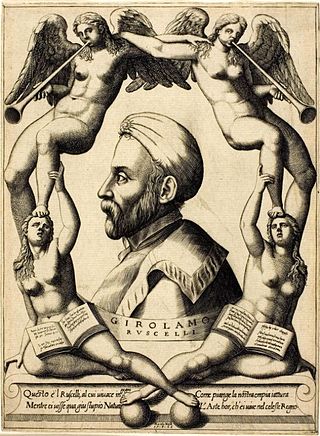
Girolamo Ruscelli (1518–1566) was an Italian Mathematician and Cartographer active in Venice during the early 16th century. He was also an alchemist, writing pseudonymously as Alessio Piemontese.

Franco Rocchetta is an Italian politician, entrepreneur, philologist and history populariser, who is usually described as the "father" of present-day Venetian nationalism and independentism.
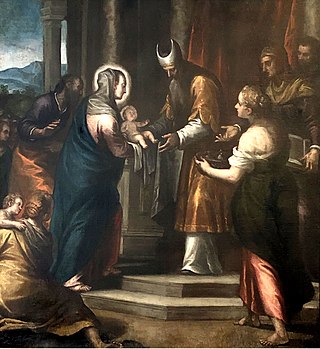
Alessandro Maganza (1556–1630) was an Italian painter of the Mannerist style, born and active in Vicenza, as well as in Venice.

The Bollettino della Vittoria is the official document after the Armistice of Villa Giusti with which General Armando Diaz, the supreme commander of the Royal Italian Army, announced, on November 4, 1918, the surrender of the Austro-Hungarian Empire and the victory of the Kingdom of Italy in World War I.
Felice Figliucci was an Italian humanist, philosopher, and theologian.
Paolo Ricci was a Franciscan, then a Lutheran, possibly an Anabaptist, and only allegedly an Antitrinitarian. He also adopted academic pseudonyms: Lisia Fileno, Fileno Lunardi, and finally the name Camillo Renato.
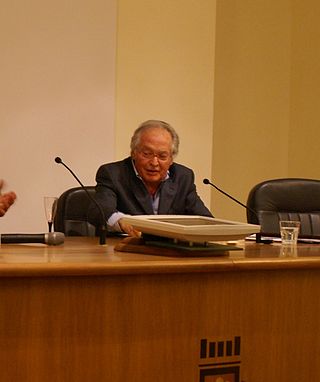
Carmine Benincasa was an Italian art critic and art historian professor.

Andreas Musalus was a Greek professor of mathematics, philosopher and architectural theorist who was largely active in Venice during the 17th-century Italian Renaissance.

Francesco Moraglia is an Italian prelate of the Catholic Church. He has been Patriarch of Venice since March 2012; he is the first native of Genoa to hold that position. He was bishop of La Spezia-Sarzana-Brugnato from 2008 to 2012.

Francesco Paolo Michetti was an Italian painter known especially for his genre works.

Gaetano Cozzi was an Italian historian, professor at Padua University, and researcher with the Giorgio Cini Foundation and Fondazione Benetton Studi e Ricerche. He was a specialist in Venetian history, with special attention to the institutions, the relationship between law and society and the cultural environment.

Fanny Cadeo is an Italian actress, television personality, singer, and model. Cadeo was born in Lavagna and studied acting with Beatrice Bracco. She achieved her first success in 1992 when she was one of the first showgirls to appear in Striscia la notizia and remained with the show until 1994. Since 2013, she has been the presenter of the Rai Due television show Il Cercasapori.

Galeas per montes is the name given to a feat of military engineering made between December 1438 and April 1439 by the Republic of Venice, when several Venetian ships, including galleys and frigates were transported from the Adriatic Sea to Lake Garda. The operation required towing the ships upstream on the river Adige until Rovereto, then transporting the fleet by land to Torbole, on the Northern shores of the lake. The second leg of the journey was the most remarkable achievement, requiring a land journey 20 km through the Loppio Lake and the narrow Passo San Giovanni.

Gustavo Frizzoni was an Italian art critic and art historian.

Minerva between Geometry and Arithmetic is a 1550 fresco fragment, usually attributed to Paolo Veronese but by some art historians to Anselmo Canera or Giambattista Zelotti. It was painted for the Palazzo de Soranzi in Castelfranco Veneto but now in the Palazzo Balbi in Venice.
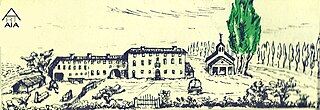
Art Aia - Creatives / In / Residence is a former agricultural center turned into an international art residency in the Italian province of Pordenone, Friuli Venezia Giulia, in the surroundings of the village of Sesto al Reghena. The artist-run organization is committed to nurturing the creative process, and it fosters artistic production and research, especially towards ecology and sustainability.
Antonio Lorenzoni was an Italian lawyer, jurist and music theorist.
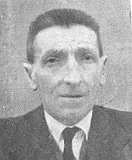
Roberto Cessi was an Italian historian and politician, specializing in Venetian history.
References
- ↑ Philip Knijff, Sibbe Jan Visser, Piet Visser, 2004, Bibliographia Sociniana: a bibliographical reference tool for the Study of Dutch Socinianism and Antitrinitarianism, p.11
- ↑ Earl Morse Wilbur, 1952, A history of Unitarianism, Volume 1, p. 81
- ↑ Cantimori, Delio (1939). Eretici italiani del cinquecento: ricerche storiche (in Italian). G.C. Sansoni-- editore. "e Pochi anni dopo (fine del 1549 o inizio del 1550) Vicenza fu teatro di un'altra adunanza di ... I punti d'accordo furono ad ogni modo : il battesimo vale solo per coloro che già credono; non può darsi magistrato cristiano, né principe cristiano, perché magistrati e principi usano la forza; i Sacramenti, semplici segni; la Chiesa Romana, totalmente diabolica. Non si potè venire ad un accordo sui problemi della Trinità e della natura di Cristo;"
- ↑ Cantimori: "si convocò un vero e proprio «concilio» anabattistico, che avrebbe dovuto risolvere la questione della divinità di Cristo e del modo d'intendere la Trinità. Il concilio fu convocato a Venezia; ogni comunità avrebbe mandato due dei suoi anziani a rappresentarla." .. Il concilio di Venezia mostra infatti che la maggioranza dei suoi partecipanti riteneva Cristo soltanto uomo, se pur ripieno di tutte le virtù di Dio; per quegli eretici non v'era altra natura che la umana, oltre quella divina;
- ↑ "Tiziano". Archived from the original on 2011-06-04. Retrieved 2010-05-30.
- ↑ Comba, E. "Un sinodo anabattista a Venezia anno 1550." Rivista cristiana 13 (1885): 21-24, 83-87.
- ↑ Roberto De Mattei A sinistra di Lutero: sette e movimenti religiosi nell'Europa del '500 1999 "Il gruppo manifestò la sua consistenza nel sinodo di Venezia del settembre 1550, una specie di concilio che rappresenta ... Aveva partecipato al concilio di Venezia e aveva quindi percorso come "ministro" l'Italia centro-settentrionale,"